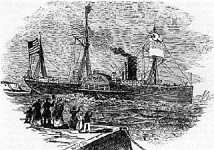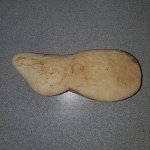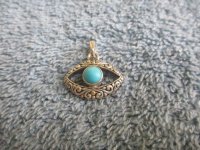pegleglooker
Bronze Member
- Jun 9, 2006
- 1,857
- 237
- Detector(s) used
- ace 250
- Primary Interest:
- All Treasure Hunting
Wreck of Winfield Scott

Winfield Scott was one of the many vessels that helped bring the Argonauts to California. Sent to California in 1850, she shuttled passengers back and forth between Panama and San Francisco. She was a modern, well-constructed ship.
In early December 1853, she was bound from San Francisco to Panama where the passengers would disembark. After leaving the vessel, the passengers would cross the isthmus to the Gulf of Mexico and board ships for the journey to their final destination. The steamer sailed through the foggy Channel at top speed. The captain, Simon Blunt, boldly asserted that fog does not slow a steamship. After all, going through the Channel was shorter and quicker than sailing outside the Channel. Besides, the Captain had helped survey these waters for the government a few years earlier. He knew these waters well.
During the evening and into the night, the ship passed the islands of San Miguel, Santa Rosa, and Santa Cruz. At about 11:00 p.m., the ship grounded bow first on a submerged ledge close to the north side of Anacapa's middle island. The impact jarred the hundreds of passengers from sound sleep to wide awake. One passenger, Edward Bosqui recalled that his cabin mate crawled about looking for his false teeth and wig. On deck, Bosqui found a mass of milling passengers. The ship's officers moved about in darkness, trying to restore calm, reassuring the passengers that everything was all right. Passengers returned to their cabins and grabbed saddlebags and satchels filled with gold. The captain tried to back the ship off the ledge. The ship's stern struck, tearing away the rudder. By now, water poured through gaping holes in the bow. Winfield Scott was fast aground and sinking. She would not sail again. The vessel was doomed.
Some crew lowered lifeboats while others kept the passengers from rushing the boats. A small pinnacle was found nearby. Passengers transferred from the boat to the pinnacle. In the morning, they moved to the beach in a nearby cove. The castaways established a shore camp, salvaged what they could, and shot seals and caught fish for food. Within a few days, the rescue of the more than 300 passengers began and was soon completed; they resumed their journeys.
Salvage efforts would rescue most of the gold and mail. She was visited by salvors various times over the years, including during the metal shortage of WWII when her hull sheathing provided material for the war effort. Today, pieces of her deck and paddle wheel can be seen in about 25 feet of water.

Winfield Scott was one of the many vessels that helped bring the Argonauts to California. Sent to California in 1850, she shuttled passengers back and forth between Panama and San Francisco. She was a modern, well-constructed ship.
In early December 1853, she was bound from San Francisco to Panama where the passengers would disembark. After leaving the vessel, the passengers would cross the isthmus to the Gulf of Mexico and board ships for the journey to their final destination. The steamer sailed through the foggy Channel at top speed. The captain, Simon Blunt, boldly asserted that fog does not slow a steamship. After all, going through the Channel was shorter and quicker than sailing outside the Channel. Besides, the Captain had helped survey these waters for the government a few years earlier. He knew these waters well.
During the evening and into the night, the ship passed the islands of San Miguel, Santa Rosa, and Santa Cruz. At about 11:00 p.m., the ship grounded bow first on a submerged ledge close to the north side of Anacapa's middle island. The impact jarred the hundreds of passengers from sound sleep to wide awake. One passenger, Edward Bosqui recalled that his cabin mate crawled about looking for his false teeth and wig. On deck, Bosqui found a mass of milling passengers. The ship's officers moved about in darkness, trying to restore calm, reassuring the passengers that everything was all right. Passengers returned to their cabins and grabbed saddlebags and satchels filled with gold. The captain tried to back the ship off the ledge. The ship's stern struck, tearing away the rudder. By now, water poured through gaping holes in the bow. Winfield Scott was fast aground and sinking. She would not sail again. The vessel was doomed.
Some crew lowered lifeboats while others kept the passengers from rushing the boats. A small pinnacle was found nearby. Passengers transferred from the boat to the pinnacle. In the morning, they moved to the beach in a nearby cove. The castaways established a shore camp, salvaged what they could, and shot seals and caught fish for food. Within a few days, the rescue of the more than 300 passengers began and was soon completed; they resumed their journeys.
Salvage efforts would rescue most of the gold and mail. She was visited by salvors various times over the years, including during the metal shortage of WWII when her hull sheathing provided material for the war effort. Today, pieces of her deck and paddle wheel can be seen in about 25 feet of water.





